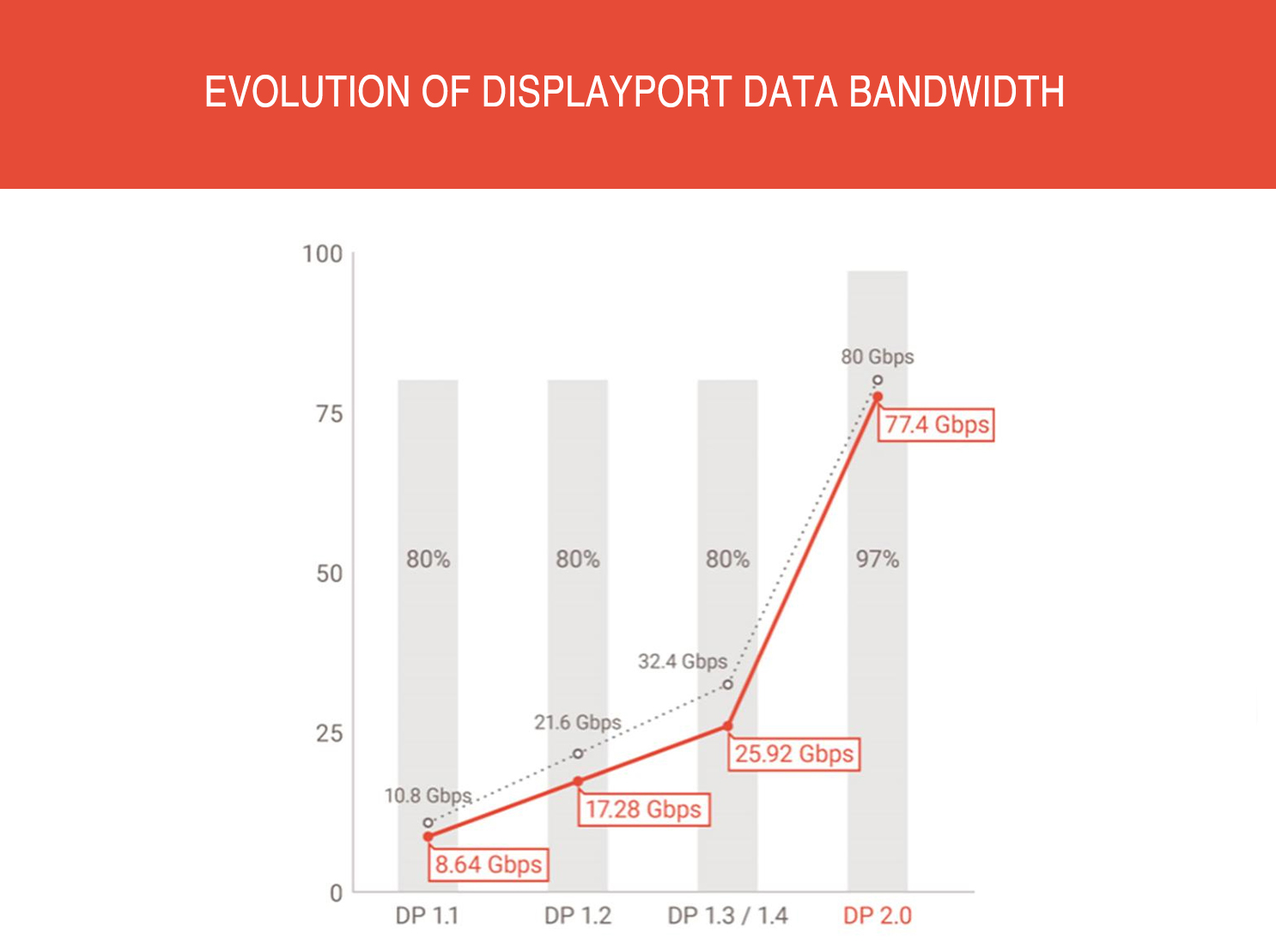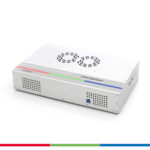VESA published the DisplayPort 2.0 specification in June 2019. DisplayPort 2.0 is the first major update to the DisplayPort standard in three years. It is estimated that the first products implementing DisplayPort 2.0 will be available in the last quarter of 2020.
Near-tripled bandwidth compared to DisplayPort 1.4a enables resolutions up to 16K with higher refresh rates. DisplayPort 2.0 is enabled via the traditional DP connector as well as via the USB-C connector via DisplayPort Alt Mode. DP 2.0 is backward compatible and includes all key features from DP 1.4a such as Display Stream Compression (DSC) and Forward Error Correction (FEC).
16K on a Single Screen & up to 10K on Multiscreen Setups
The new DisplayPort 2.0 standard enables a combined 77.4 Gbps maximum link bandwidth across four lanes. That is more than three times more than the previous DisplayPort 1.4a was capable of. As a result, DP 2.0 is the first standard supporting 8K@60Hz with full-color 4:4:4 resolution with 30bpp for HDR-10 support.
DisplayPort 2.0 enables a variety of different high-performance setups:
Single display resolutions
- One 16K (15360×8460) display @60Hz and 30 bpp 4:4:4 HDR (with DSC)
- One 10K (10240×4320) display @60Hz and 24 bpp 4:4:4 (no compression)
Dual display resolutions
- Two 8K (7680×4320) displays @120Hz and 30 bpp 4:4:4 HDR (with DSC)
- Two 4K (3840×2160) displays @144Hz and 24 bpp 4:4:4 (no compression)
Triple display resolutions
- Three 10K (10240×4320) displays @60Hz and 30 bpp 4:4:4 HDR (with DSC)
- Three 4K (3840×2160) displays @90Hz and 30 bpp 4:4:4 HDR (no compression)
When using only two lanes on the USB-C connector via DP Alt Mode to allow for simultaneous SuperSpeed USB data and video, DP 2.0 can enable such configurations as:
- Three 4K (3840×2160) displays @144Hz and 30 bpp 4:4:4 HDR (with DSC)
- Two 4Kx4K (4096×4096) displays (for AR/VR headsets) @120Hz and 30 bpp 4:4:4 HDR (with DSC)
- Three QHD (2560×1440) @120Hz and 24 bpp 4:4:4 (no compression)
- One 8K (7680×4320) display @30Hz and 30 bpp 4:4:4 HDR (no compression)
Panel Replay
DP 2.0 also supports VESA’s new Panel Replay capability, which is designed to optimize the power envelope and thermal performance of smaller end devices, such as all-in-one PCs and laptops, with higher resolution displays. Similar to the Panel Self Refresh capability in Embedded DisplayPort (eDP), Panel Replay incorporates a partial update feature that enables the system video processor, or GPU, to update only the portion of the display that has changed since the video frame update, thus saving system power. Advantages include the ability to recharge a device more quickly while at the same time using it.
(Source: VESA)




